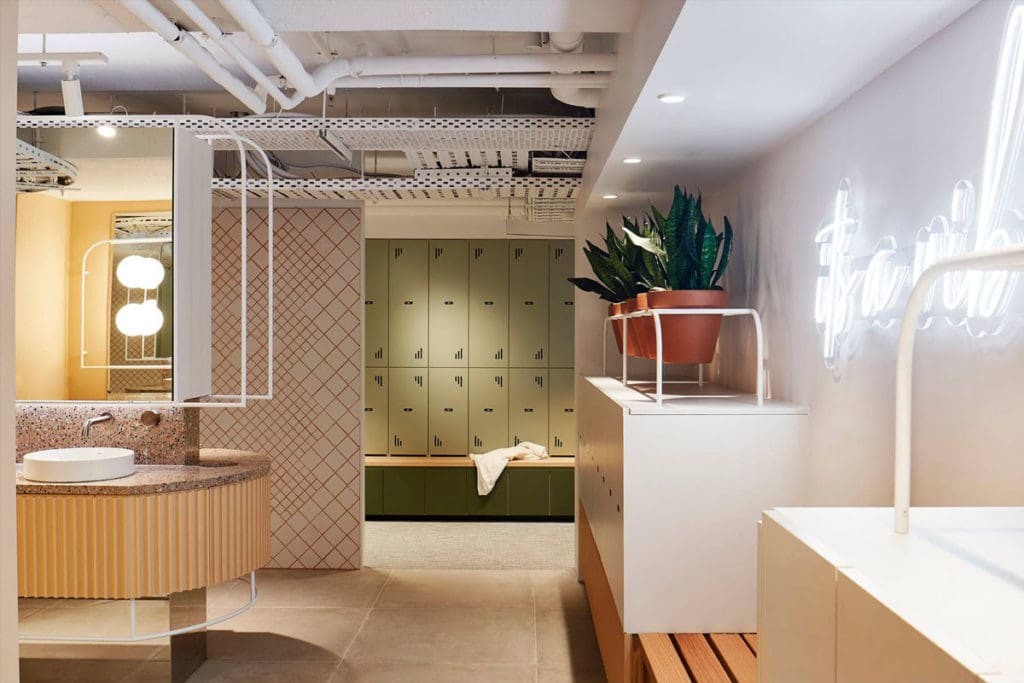Spaces to Bring Commuters Along for the Journey

Sydney, NSW
Improving cycleway networks, post-COVID efforts to lure employees back into the office and escalating pressures to attract quality staff are all adding momentum to the provision of quality end-of-trip facilities, according to leading Australia provider Five at Heart.
The Sydney-based company’s founder and CEO, Mark Rossiter, says there has been a surge in the creation of end-of-trip facilities during the past five years, particularly in inner-city commercial developments, and that momentum appears to set to continue.
Mark recently compared Australia’s current active transport network to a railway system with many of the train stations in place, but without a lot of the rails to connect them.
His business has been busy designing and building end-of-trip facilities in Australia’s capital cities and says many of the landlords and major employers are ready and waiting for more cycleways to be implemented so those facilities can be put to full use.
He says that gap is starting to narrow more quickly, as State and local governments recognise the benefits of effective separated paths for active transport and invest resources accordingly.
Mark said many commercial property developers and employers had already identified the potential.
“The incentives are starting to line up in most major capital cities,” he said.
“They are taxing car parking spaces and a lot of employers have stopped paying for car spaces, so it makes it a real and more expensive cost for people to drive.
“Demand for car parking in the city centres is definitely collapsing.”
He says in contrast, demand for bike parking continues to be strong, as companies look to enable their employees to ride, walk or run to work.
Spaces Worth Commuting For
“I think that demand is going to continue, based on the desire for landlords and employers to get people back into the office by creating a space that’s worth coming in for,” he explained.
“They are trying to create an environment that feels as good or better than being at home, and good end-of-trip facilities are definitely a part of that.
“Each year the projects are getting fancier and fancier – and cyclists are the winner.”
“They are trying to bring more amenity in other ways as well, such as cafes and working spaces, better accessibility, better natural lighting and more integrated technology.
“They are using them as ways to reform the office landscape and make it more attractive to people.”
Mark says the pandemic and subsequent trend towards working from home had transformed the way people viewed commuting to work.
“The commute is now considered more of a part of work than it was before, not just part of the daily grind.
“Throw in a bit of exercise as well and it makes sense for people. It’s not for everyone but it’s attractive for many.
“Essentially, all the major buildings are doing high-quality end-of-trip facilities these days.”
He said commercial developers are using these facilities to help show “what the building stands for”.
“It’s definitely a big incentive to attract quality tenants. Each year the projects are getting fancier and fancier – and cyclists are the winner.
“The level of quality is certainly rising globally, particularly in North America and Europe. We have had some really big successes in London, San Francisco and Toronto,
“Melbourne and Sydney are probably leading the charge on the quality front in Australia but there’s really nice projects popping up all over the country. There’s beautiful projects in Perth, Canberra and Brisbane. We are seeing nice projects in Adelaide, where it’s really starting to pick up.”
“They don’t want to be counting how many facilities are available in that space, but you want them to be noticing how nice the experience feels.”
He said residential developments were lagging in the provision of end-of-trip facilities but were catching on and were set to become more common.
“People who own commercial buildings care more about long-term value, what it will be worth in 20 or 30 years’ time, while residential properties are much more dictated by a price point,” Mark continued.
“The incentive to do high quality stuff is a lot lower because people are looking more at keeping costs down.
“However, we have been working with a number of quality residential projects who are trying to differentiate their developments using high-quality products to create a space that feels nice.”
As quality issues surrounding some high-rise developments impact on the reputation of high-rise accommodation, developers of more premium building are using better end-of-trip facilities as a marketing tool.
Quality Not Quantity
Mark says the emphasis should be on the quality and feel of the space, rather than the number of facilities.
“They don’t want to be counting how many facilities are available in that space, but you want them to be noticing how nice the experience feels,” he said.
“The most important thing is to calculate how big it needs to be, based on demand, and then making sure the space allowance is adequate. You don’t want to be jamming in the facilities and doing everything at the absolute minimum.
“You want people to walk into a space and think ‘gee, this a really nice place to be’.”
